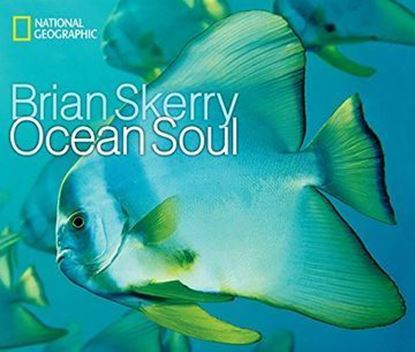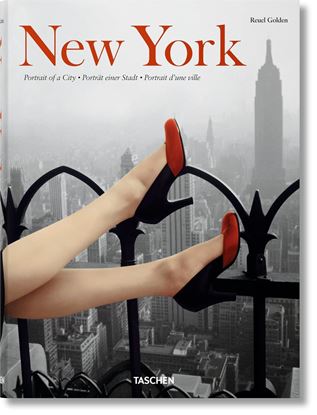

OCEAN SOUL (B) (OF3)
Ocean Soul is a love story. It is a story of discovery. It is a story of hope. The story begins when a boy who loves the sea attends an event with underwater photographers and has an epiphany: "I had always wanted to explore the oceans, but I now understood how I would do this. I would do it with a camera." With sheer determination, hard work, and a little bit of luck the boy, named Brian Skerry, realized his dream with more than 20 awe-inspiring articles for National Geographic magazine. Now, with Ocean Soul, he showcases his stunning photography and describes his adventurous life in a gripping portrait of the ocean as a place of beauty and mystery, a place in trouble, and ultimately, a place of hope that will rebound with the proper attention and care.
995
796
NEW YORK, PORTRAIT OF A CITY
This book presents the epic story of New York on nearly 600 pages of emotional, atmospheric photographs, from the mid-19th century to the present day. Supplementing this treasure trove of images are over a hundred quotations and references from relevant books, movies, shows, and songs. The city’s fluctuating fortunes are all represented, from the wild nights of the Jazz Age and the hedonistic disco era, to the grim days of the Depression and the devastation of 9/11 and its aftermath, as its brokenhearted but unbowed citizens picked up the pieces.
New York’s remarkable rise, reinvention, and growth are not just the tale of a city, but the story of a nation, From the building of the Brooklyn Bridge to the immigrants arriving at Ellis Island; from the slums of the Lower East Side to the magnificent art deco skyscrapers. The urban beach of Coney Island and the sleaze of Times Square; the vistas of Central Park and the crowds on Fifth Avenue. The streets, the sidewalks, the chaos, the energy, the ethnic diversity, the culture, the fashion, the architecture, the anger, and the complexity of the city are all laid out in this beautiful book. This is the greatest city in the world after all and great are its extremes, contradictions, and attitude.
4,995
3,996
NADIE LOGRARA CONOCERSE. GUERRA II(OF2)
Tras el éxito de La Música de la Memoria, libro dedicado a los grandes músicos del siglo XIX, Xavier Güell se adentra en los años más oscuros del siglo xx. Cuarteto de la guerra narra la historia de cuatro hombres que luchan por su vida y por su música cuando los totalitarismos y el horror bélico asolan Europa. Nueva York, Berlín, Múnich, Moscú, Barcelona y Los Ángeles son los escenarios donde transcurre el épico enfrentamiento de cuatro grandes compositores con el poder político de su tiempo, para evitar que su obra sea sometida, dirigida y utilizada, a la vez que procuran desesperadamente la supervivencia de los seres que aman. Cuarteto de la guerra reflexiona así mismo sobre la música como revelación y sabiduría, como eco de lo intangible, como impulso directo a lo más profundo del alma, sobre el diálogo entre el hombre y lo invisible y, por último, sobre el sentido de nuestra propia existencia. En el segundo volumen de la tetralogía, Nadie logrará conocerse, Richard Strauss, considerado el mayor compositor de su tiempo, decide permanecer en la Alemania nazi y aceptar la presidencia de la Cámara de Música del Reich con el propósito de proteger a su familia -su nuera y sus dos nietos son judíos-, asegurar el estreno de su ópera La mujer silenciosa, cuyo libreto ha escrito el judío Stefan Zweig, y favorecer la cultura alemana. Decisión controvertida que le hará aparecer a los ojos del mundo como un colaboracionista y ser sometido, al final de la guerra, a un proceso de desnazificación que durará más de tres años. Los restantes títulos de Cuarteto de la guerra están dedicados a Béla Bartók (Cuarteto de la guerra I. Si no puedes, yo respiraré por ti), Dimitri Shoshtakóvich (Cuarteto de la guerra III. Y Stalin se levantó y se fue) y Arnold Schoenberg (Cuarteto de la guerra IV. Romperé los cerrojos con el viento).
500
400
MUSICOS, COMPOSITORES Y CANCIONES DOM.
Músicos, compositores y canciones dominicanas en los siglos XIX y XX fue elaborado mediante una metodología heterogénea. Incluyó consultas bibliográficas, entrevistas a los propios músicos o a familiares y relacionados, consultas a historiadores y músicos de los distintos municipios y provincias, búsqueda en periódicos y revistas y, de manera especial, las consultas a musicólogos y expertos en esos temas, que afortunadamente apoyaron con entusiasmo este trabajo.
1,200
960
MUSICA. LA HISTORIA VISUAL DEFINITIVA
A lo largo de la historia, la música ha evocado todo el espectro de las emociones humanas, independientemente del país o la cultura. Este libro de historia de la música analiza esa experiencia universal desde una perspectiva cronológica y global: desde los primeros instrumentos musicales, elaborados con huesos y caracolas, hasta la sofisticación de las guitarras eléctricas y los sintetizadores.
Dado que cada tema musical se presenta en una concisa y atractiva doble página, es fácil viajar entre mundos musicales separados por continentes y siglos de distancia en un recorrido de unos pocos capítulos. Y no son solo las notas y los sonidos lo que se examina, sino también las absorbentes historias que tienen detrás.
2,200
1,760













